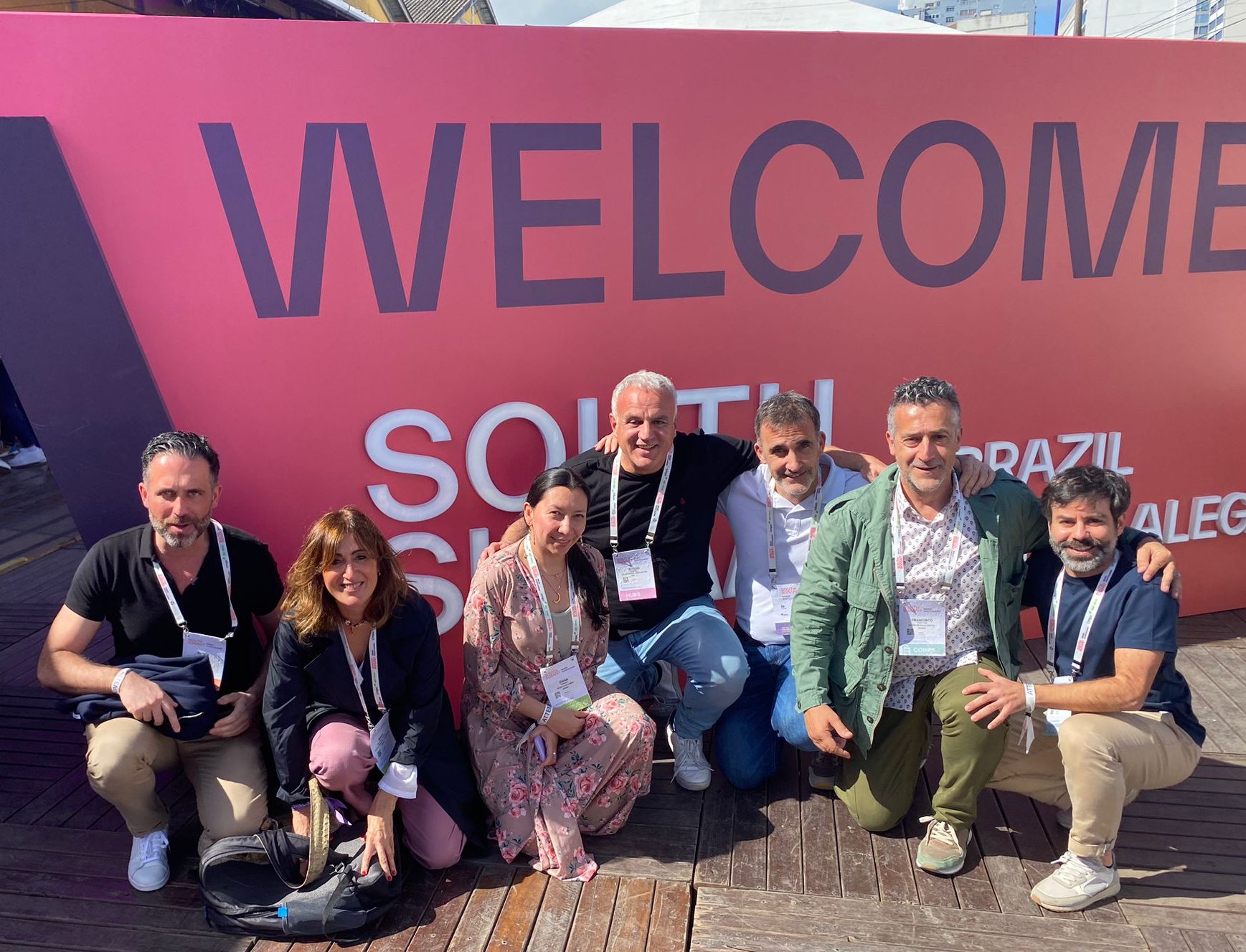En Agosto, nos visitó Laura Grineviciute de la Asociación Rural de Telecentros de Lituania, y tras su vuelta nos devuelve su crónica respecto a su visita de estudio a Asturias en relación con los Centros de Dinamización Tecnológica Local.
A midnight scene of vibrant, lively streets was my first encountering with Gijon and it said it all: I had come to a city with non-stop celebration of life where citizens spend much of their time in numerous splendid open cafes and restaurants. This authentic leasure-luring environment almost made me think I was the only visitor who had come there for work purposes.
Prior to my trip, my knowledge of the northwest Spain was rather limited. I thought I will find extremely hot weather, dry surrounding during the high season, but I was wrong. Asturias province is known as the ‘Spanish Switzerland ‘ or ‘Green Spain’ due to its lush countryside, high mountainous areas and frequent rains throughout the year.
On the first day of my visit I was taken to an industrial city of Aviles to meet Yolanda Alonso Fernandez, a councillor for Welfare and Joaquin Gomez Gonzalez, Manager of Education, Training and Employment and Brendan Doyle, an external relations manager for CTIC Foundation. Also I visited Centro de Empleo Europe where one of the telecentres is located.
The Telecentre was full of youths browsing information on the Internet, using free learning programs directly from the Internet or exploring various social networks. I learnt that much of the telecentre’s work is focused on providing training meeting needs of the community. For example, much focus falls on providing and facilitating use of e-services. Currently use of up to 1,000 public services available online. The facility was as well equipped with IT books and printed information material. Last, but not least the telecentre has rather flexible working hours and very professional staff.
I was positively surprised when counsellor for welfare of the town hall showed up at the meeting proving high degree of the local government involvement in development and promotion of telecentres. This assertion can be extended on most of Spain.
Today 85 CDTLs (Centro De Dinamization Tecnologica local) operate in Asturias region. A strategic decision had been made to change the name of Telecentres into CTDL, thus elevating their status. While most of the facilities operate in rural areas, almost 90% of the region’s territory is covered with broadband Internet. 92 competent staff managers CDTL and supports citizens. Official statistics indicate that there are around 110,000 regular users in all CDTL every year equalling to around 10% of the regional population.
Up to 2008 all of the facilities were managed by the CTIC Foundation—my host in Gijon. The foundation served as a prime venue for developing the network since 2003 in the context of innovation policy launched by the regional government as a major hope to boost competitiveness. Today the foundation is managed by a board of trustees made up of both private and public organizations and is focused on areas: R&D&I, information technology and information society. The Foundation is located in science and technology park of Gijon – a prime location where science and technology development companies of all sorts are located.
In the area of Information society CTIC
Foundation projects and activities are focused on direct contacts with citizens by encouraging use of e-services and bridging of the digital divide. Specifically, the digital society line carries out the following task: digital literacy, outreach conferences, design of outreach and training materials, methodology to introduce electronic services, programmes developed and customized for social groups with difficulties in accessing the information Society. I had extremely valuable experience in gaining ideas for the new projects.
The next day was equally inspiring. I was taken to the Asturias regional government based in Oviedo. I met Don Alberto Perez, Director General of Modernization, Telecommunications, Paco Prieto, CTIC Foundation Director for Information Society and Jose Villanueva, Manager of CAST. I had an opportunity to meet government representatives supporting CDTL development in the region. 
On the same day, we took a 70 km-drive from Oviedo to a little Asturian village called Onis. The rural area surrounded by Picos de Europa mountain, having around 5000 habitants mainly living in colourfully painted two-flour houses and working in tourism sector. I was impressed by a new, modern-looking, spacious CDTL located inside newly-constructed premises. The venue is home not only to CDTL but is also capable of hosting variety of events such as festivals or exhibitions. Senior citizens have opportunity to socialise in a separate section of the facility. We were met by the mayor of Onis and CDTL technical officer. Despite the language barrier it was clear that the success of the telecentres is very much result of commitment locals and staff put into it. The centre manager knows every person in the village enjoying widespread respect and attention. The CTDL is also providing other services such as, photocopying, laminating or digital photographing. In conclusion, that earning commitment of locals is key to success of telecentres, in addition to teaching technical skills etc.
Telecentre.Europe Network staff exchange programme provided for me an excellent opportunity to meet colleges from different countries and learn concrete things. Being a truly two-way learning process, the trip was full of discussions, exchanging views, transferring knowledge rewarding socialising. There are certainly ideas that telecentres in Lithuania can utilise to improve services. Implementation of joint Lithuanian-Spanish projects will certainly be an exciting goal to work on in the future.






